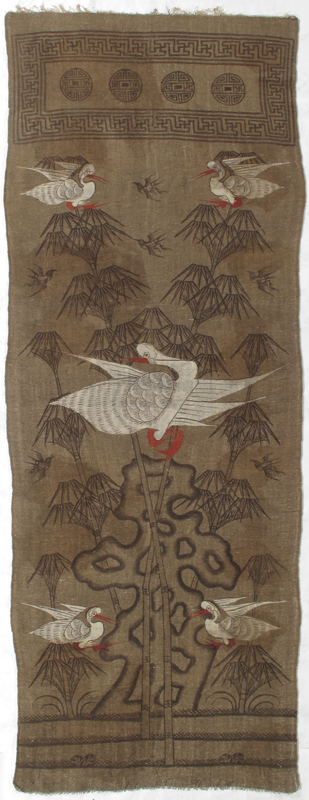8849 English Tapestry 7 ft 4 in x 17 ft 4 in (224 x 528)

“Ulysses finding Achilles among the maidens”
Mortlake tapestry
Attributed to the craftsman or the weaver of the Ovid’s Metamorphoses
7ft 4in x 17ft 4in (224 x 528 cm)
First half of the 18th century
Excellent condition
This rare tapestry is a product of the famed English royal manufactory of Mortlake — the sixth episode of seven in the mythological legend, the “Story of Ulysses”. It illustrates Ulysses (in Greek, Odysseus) finding Achilles among the maidens at the Court of Lycomedes. On the left in the open colonnade, Ulysses in disguise with Diomed offers musical instruments to the daughters of King Lycomedes. Four maidens are grouped around the seated Achilles, dressed in women’s clothes. As he draws a sword from its sheath, two other maidens enter from the right.
Our original research has established this tapestry as identical to the example illustrated in Henry Currie Marillier, English Tapestries of the 18th Century, London: Medici Society, 1930, plate 42b. At the time of publication, known examples from the “Story of Ulysses” series were limited to: one set of five pieces located at Hinwick House, Wellingborough, England; one set of three pieces formerly at the Spanish Art Gallery, one piece the former property of a Mr. Herrmann. A single fine copy of this tapestry with a different border and dimensions was located at Tylney Court, Hampshire.
King James I of England established a tapestry manufactory at Mortlake in west London in 1619. He was perhaps the first European king to understand the status that tapestries conferred. With the encouragement and enthusiasm of his son, Prince Charles (later Charles I), he added prodigiously to the English royal collection. Although suffering from constant financial difficulties, during the 1620s and 1630s Mortlake equaled, or even excelled work done in France and Flanders at the time.
The mythological sequence for this dynamic composition is compelling. When Achilles was a boy, a prophet predicted that he alone would conquer Troy. Achilles’ mother, Thetis, soon realized that such a destiny would bring death upon her son. To protect him from the evident peril she hid him in the court of King Lycomedes, disguised as one of the maidens. Eventually the Greeks, helped by Ulysses, revealed Achilles’ identity through an ingenious trick. Ulysses placed arms and armor amidst a display of women’s finery and musical instruments that he presented to the daughters of Lycomedes. One story tells that Ulysses seized upon Achilles when he was the only “maiden” to be fascinated by the swords and shields, whereas another version narrates that when Ulysses and his companions created battle cries and sounded the trumpets, Achilles, thinking they were being attacked, rushed for weapons. He then went willingly with the Greeks to attack Troy, for he could not escape his destiny.
Selected Sources:
J. Franses, Tapestries and their mythology, New York: Drake Publishers Inc., 1975, p. 45
H. C. Marillier, English Tapestries of the 18th Century, London: Medici Society, 1930, p. 112-113
B. Phillips, Tapestry, London: Phaidon Press Limited, 1994, p. 68-70 http://www.pantheon.org/mythica/articles/a/achilles.html








